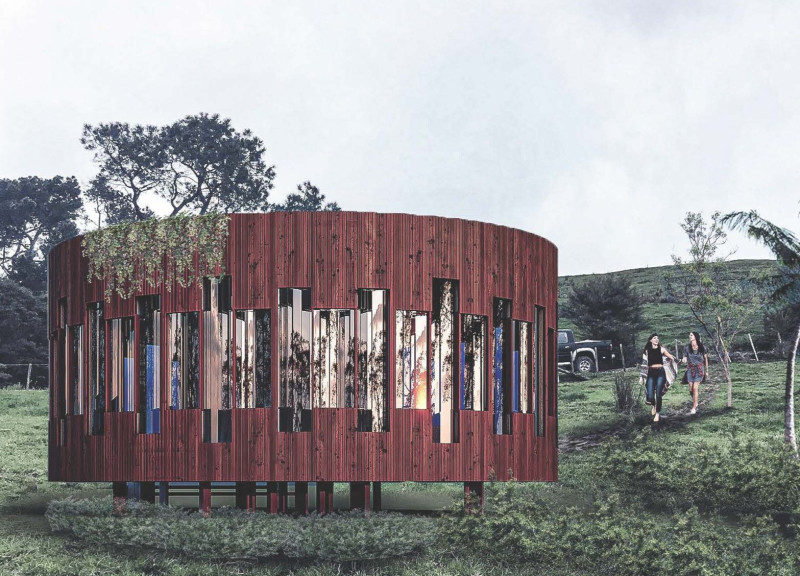5 key facts about this project
The Nest is an architectural design inspired by the form and function of a bird's nest, located in a mountainous setting. It serves as a refuge that aims to connect with nature while providing comfort to its occupants. The design features a circular shape, which allows for open views and ample natural light. This approach not only prioritizes inclusivity but also enhances the overall experience for anyone living in the space.
Design Concept
The layout includes a central circulation area that links various functional spaces. These spaces involve a relaxation zone, a dining area, a bedding area, and a bathroom. This organization promotes easy movement and interaction, creating a harmonious flow between private and shared areas. The 360-degree opening in the structure enables bright daylight to enter and permits expansive views of the surrounding landscape, allowing the inhabitants to feel connected to the outdoors.
Materiality
Materials have been chosen to support both the structure's strength and its visual appeal. The main framework uses glued laminated timber, a material that offers both durability and flexibility. The outer lathing and cladding consist of red cedar, known for its aesthetic warmth and ability to withstand various weather conditions. Inside, paneling creates a welcoming environment, while the roof is layered with EPDM rubber to ensure waterproofing and longevity.
Sustainability Considerations
The design also prioritizes sustainability with an innovative waste treatment system. It employs a coconut filter, which enables the recovery of compost that can be used in agriculture. This method helps to reduce the environmental footprint of the building. Solar panels are included to support energy efficiency, reflecting an emphasis on using renewable energy sources.
Visual Integration
Visual representations of The Nest illustrate how it fits within the landscape. The form of the building engages with the surrounding terrain, showing how natural features can influence design choices. The facades create a balance between solid and transparent elements, enhancing the relationship between inside and outside. Unique architectural details invite both reflection and appreciation, offering a calm and serene living environment where occupants can immerse themselves in nature.






















































